Papers by Giovanna Morselli Peebles

2008 to develop an Internet-based, prototype, virtual archeology "museum" for Vermont. The grant ... more 2008 to develop an Internet-based, prototype, virtual archeology "museum" for Vermont. The grant application promised to: …….design an Internet-based museum with many rooms populated with all the many digital data sets collected by archeologists that now generally live only in their hard drives and in technical publications: GIS spatial data, photos of artifacts, artifact databases, field notes, site summaries, historic maps, technical reports, and other information. But we are going to go a step further with our virtual museum: we are going to ask archeologists to tell 1 st person stories about their discoveries and invite indigenous people and other community members to write their own stories about the archeological sites. We want to create a virtual museum template that can be easily replicated by other states, institutions, and organizations that don't have the resources to create their own and facilitate a shift in paradigm for displaying and accessing archeological information (Peebles 2008:4
Anthropology News, Sep 1, 1977
Vermont's Stone Chambers An Inquiry Into Their Past , 1980
iIn 1980, the Vermont Historical Society published our final stone chamber study as this publicat... more iIn 1980, the Vermont Historical Society published our final stone chamber study as this publication, following a shorter 1979 article in Vermont History. The 192 Footnotes are arguably the most important part of this publication. My surname was Neudofer at the time. Email me for the Errata sheet and additional readings contemporary with this 1980 publication.
Vermont History, Vol. 47 No. 2, 1979
This article in the Spring 1979 issue of "Vermont History" is a short version of what would becom... more This article in the Spring 1979 issue of "Vermont History" is a short version of what would become the 1980 full publication, Vermont's Stone Chambers: An Inquiry Into Their Past, which was also published by the Vermont Historical Society. At the time of writing, my surname was Neudorfer.

The SAA archaeological record, 2018
In November 2015, the SAA Board of Directors established a Task Force to (1) define appropriate r... more In November 2015, the SAA Board of Directors established a Task Force to (1) define appropriate relationships among professional archaeologists, avocational archaeologists, and artifact collectors; (2) develop a position statement on the subject for dissemination by SAA; and (3) suggest concrete actions to promote the statement’s message. After a three-year process of study and exchange of ideas between the Task Force and the Board, in summer 2018, the Board ratified and published on the SAA website the “Society for American Archaeology Statement on Collaboration with Responsible and Responsive Stewards of the Past.” This paper summarizes the process of developing the statement, relates the results of a 249-stakeholder review of an initial statement draft, and shares the finalized statement and associated SAA-recommended actions to further the statement’s principles.

The Vermont Division for Historic Preservation seeks a Level I Start-Up Grant to revolutionize cu... more The Vermont Division for Historic Preservation seeks a Level I Start-Up Grant to revolutionize current practices of disseminating archeological information to scholars, educators, students, communities, and the general public. It seeks to transform the typical archeological investigation "end products" -- an unpublished technical paper report and boxes full of artifacts and other data -- into an integrated virtual archeology museum. This project is the first step towards creating a sustainable Internet-based Vermont archeology virtual museum that we call "A Sense of Place through Archeology" and will lead the way for other states and organizations to use similar tools and formats. The grant will fund development of a plan, a proof of concept, and a prototype for a virtual archeology museum that can be used by any interested organization to reveal the information and stories now locked in inaccessible files and storage cabinets. Other states have expressed great i...
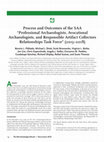
The SAA Archaeological Record, 2018
In November 2015, the SAA Board of Directors established a Task Force to (1) define appropriate r... more In November 2015, the SAA Board of Directors established a Task Force to (1) define appropriate relationships among professional archaeologists, avocational archaeologists, and artifact collectors; (2) develop a position statement on the subject for dissemination by SAA; and (3) suggest concrete actions to promote the statement’s message. After a three-year process of study and exchange of ideas between the Task Force and the Board, in summer 2018, the Board ratified and published on the SAA website the “Society for American Archaeology Statement on Collaboration with Responsible and Responsive Stewards of the Past.” This paper summarizes the process of developing the statement, relates the results of a 249-stakeholder review of an initial statement draft, and shares the finalized statement and associated SAA-recommended actions to further the statement’s principles.
The Journal of Vermont Archaeology, 2013
This commentary results from my nearly four decades as State Archaeologist in the Vermont Divisio... more This commentary results from my nearly four decades as State Archaeologist in the Vermont Division for Historic Preservation (DHP). The DHP serves as the Vermont State Historic Preservation Office (SHPO) under state and federal laws. The Vermont Legislature created the position of State Archaeologist in 1975 as part of the state's historic
preservation enabling legislation, a late entry into the national historic preservation program. The legislature funded the position in 1976, when the DHP hired me as Vermont's first, and thus far only, State Archaeologist. Being and learning on the job from the earliest days of cultural resources management provides a unique vantage point from
which to look back.

Mount Independence, the best known cultural landmark in the East Creek drainage of Lake Champlai... more Mount Independence, the best known cultural landmark in the East Creek drainage of Lake Champlain, is famed as the best preserved Revolutionary War site in the United States. However, long before its role in recent American and Vermont history, the Mount was revered by hundreds of generations of Native Americans throughout the pre-Contact Northeast as a source of excellent quality chert for tool making. Since Paleo-Indian times, its blue/black chert, unique clustering of topographic and environmental features, and biological bounty channeled Native Americans into this tiny Lake Champlain watershed. The Vermont Division for Historic Preservation’s 1977 East Creek Archaeological Survey project assembled what was then known about the prehistoric archaeology of East Creek and its environs and dramatically confirmed the importance of this locale to prehistoric Native Americans. This article contains various poorly known facts about the area, including the Vermont Electric Power Company's idea of building a nuclear power plant across East Creek near the Mount.


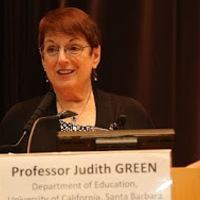

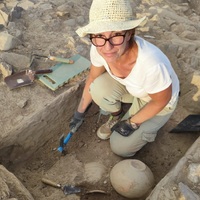
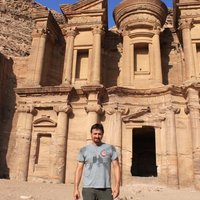


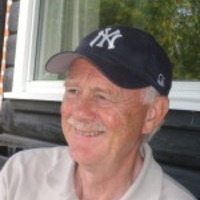
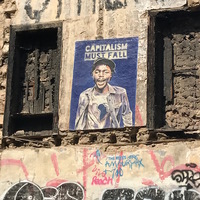

Uploads
Papers by Giovanna Morselli Peebles
preservation enabling legislation, a late entry into the national historic preservation program. The legislature funded the position in 1976, when the DHP hired me as Vermont's first, and thus far only, State Archaeologist. Being and learning on the job from the earliest days of cultural resources management provides a unique vantage point from
which to look back.
preservation enabling legislation, a late entry into the national historic preservation program. The legislature funded the position in 1976, when the DHP hired me as Vermont's first, and thus far only, State Archaeologist. Being and learning on the job from the earliest days of cultural resources management provides a unique vantage point from
which to look back.